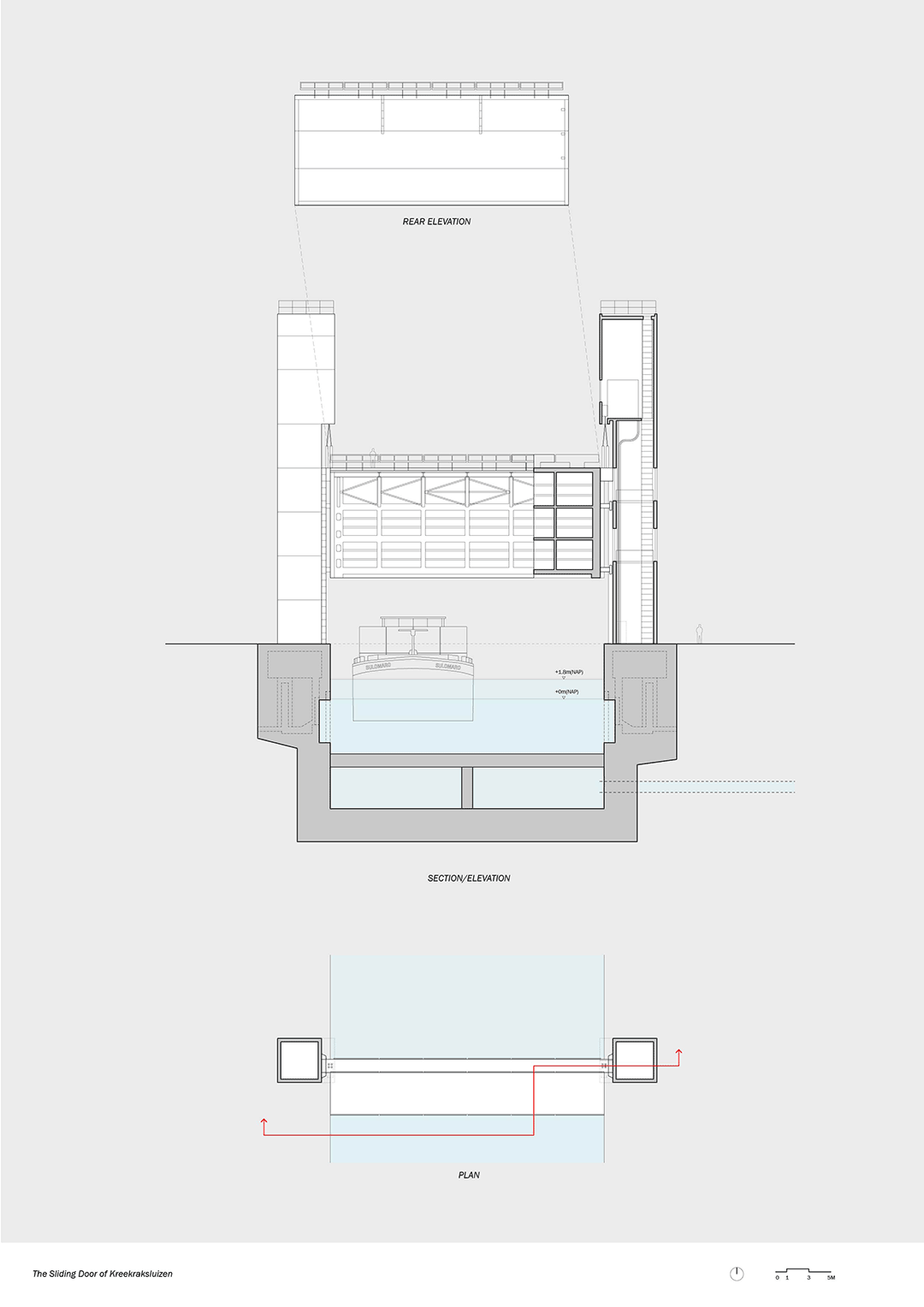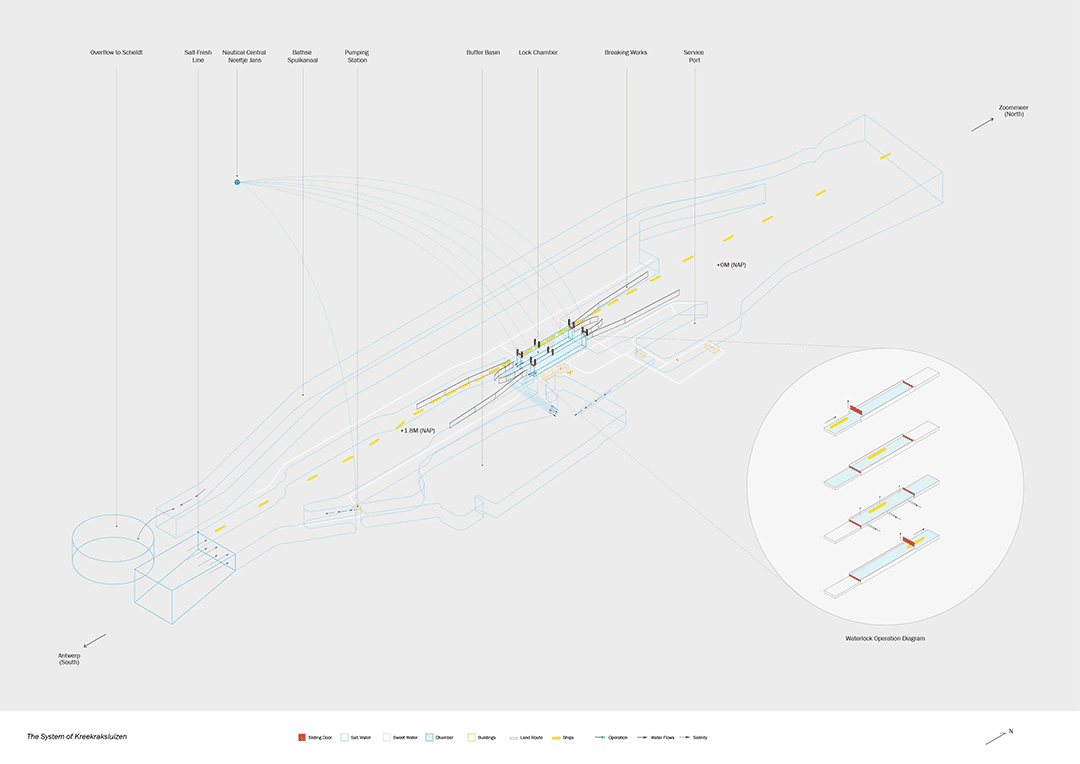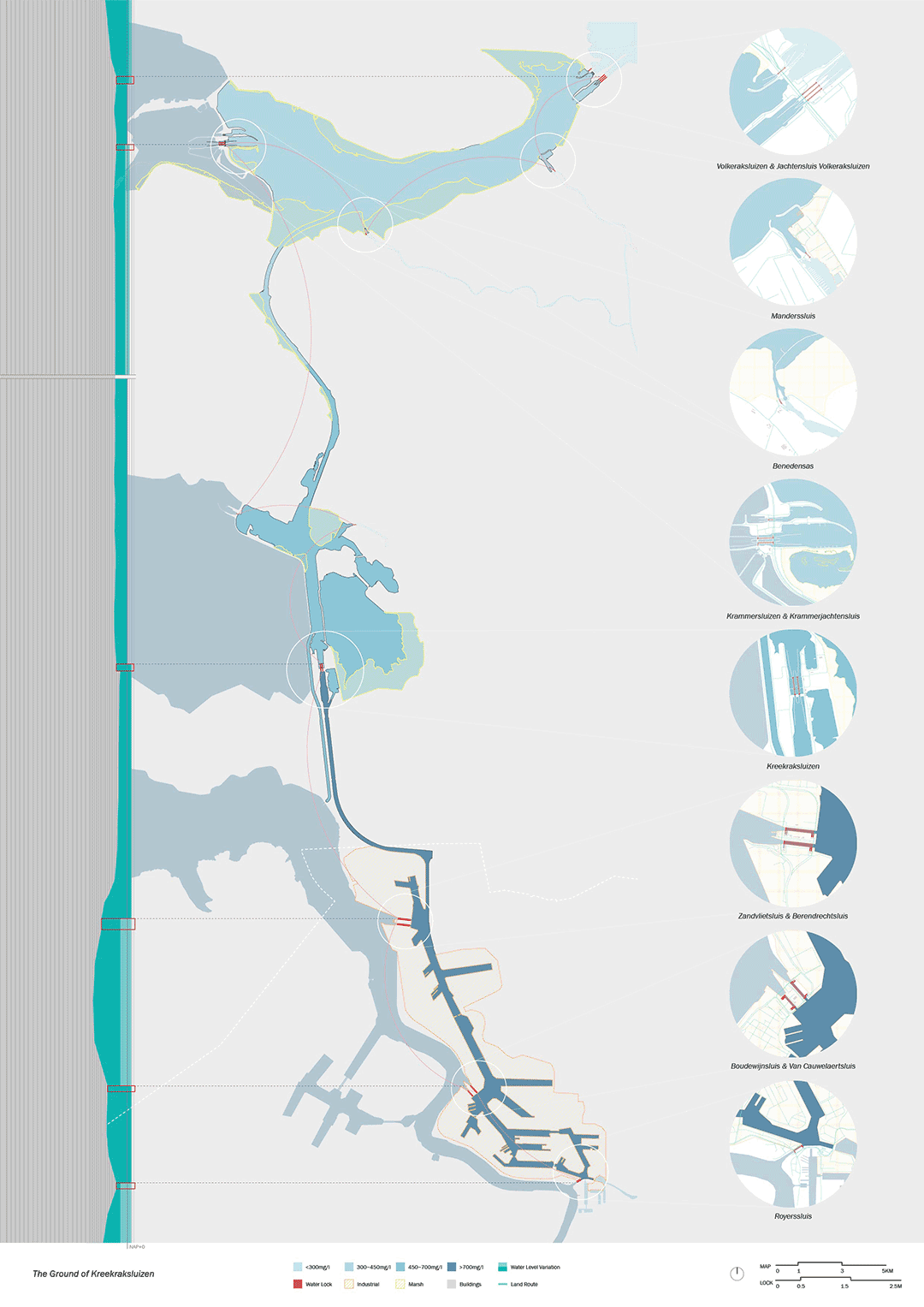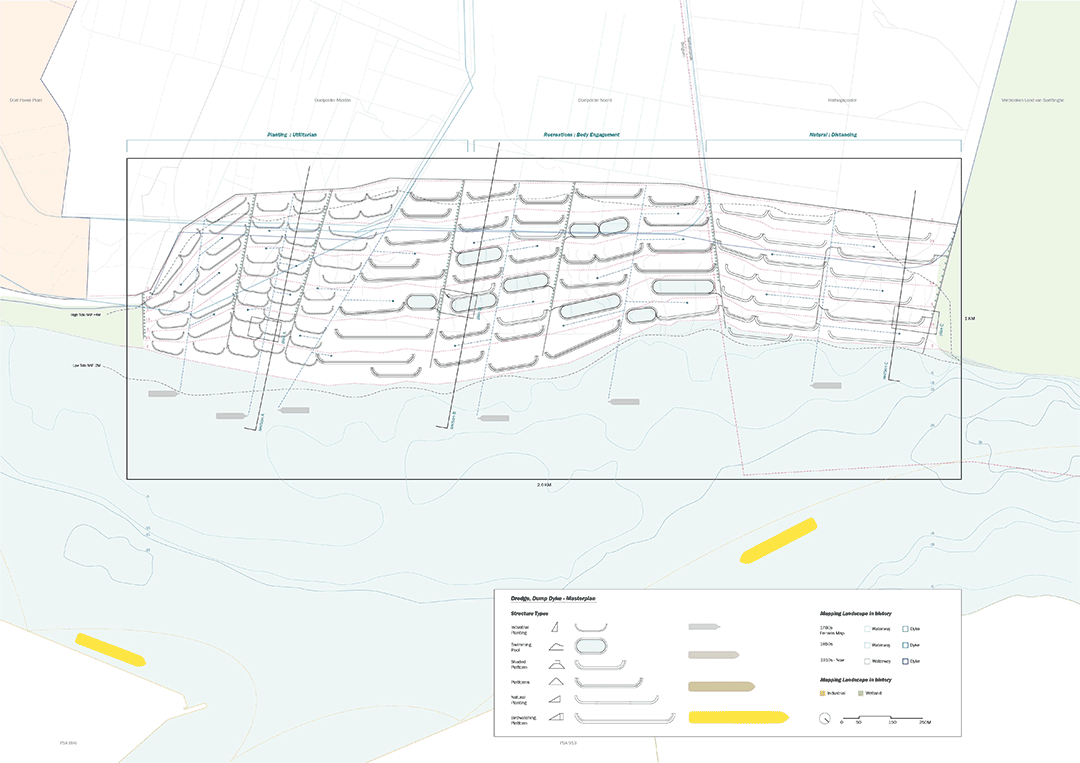Dredge, Dump, Dyke
01-07-2021hc
“One day, a new type of embankment was built at the river shore of Hedwigepolder and Doelpolder, to replace the old, steep dyke. Unlike the one-hard-line dykes that abruptly separate the waterfront and the inland, the new embankment was consisted of continuous blocks on a gradual slope. The blocks were built out of the sediments from the river bed. Everyday, the accumulated sediments in Scheldt needed to be dredged out, in order to maintain the minimum navigation depth. The new embankment was the destination of these sediments – at least for a while. Here, the fine sediments were carefully piled up into long and tall blocks, parallel to the water shore to block the tides and floods. … The blocks were also constantly vanishing. The tides washed away some of the sediments form them. A process of erosion and deposition shaped this landscape between land and water. …“

The project “Dredge, Dump, Dyke” experiments with the design methodology which begins with site analysis through closely observing the site-specific object. The exploration continues as the “thing” water lock (Kreekraksluizen) and its functioning mechanism reveals the properties of water in Schelde, such as saltiness, tides, and the environmental impact of port activities. To reflect on the issues of dredging in the waterway, the rewilding polders, and the unignorable nuclear power plant, the project proposes a provocative multi-function landscape consisting of light structures of reeds, strategic plantings, and sediments from the river bed. The landscape is a dumping field, a recreational water park, and a cleaning field. It aims to highlight the costs of economic activities and how we can all use some humor in the discourse on serious topics.


